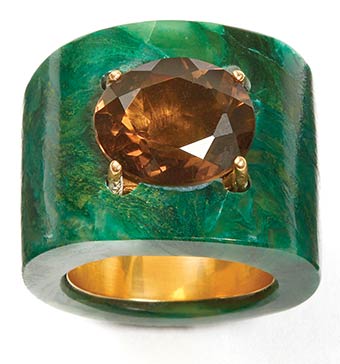Game”, so the saying goes, “recognise game”. And when it comes to the multi-hyphenate and genre-defying artist Es Devlin’s astounding work over the last three decades this streetoriginating aphorism is entirely apt. Actor Benedict Cumberbatch, who worked with the London-based artist and the physicist Carlo Rovelli on an immersive installation inspired by the latter’s fascinating book, The Order of Time, said this about Devlin: “Es knows how to bend the mind around the corners of our experience.”
Others are equally effusive. Bono said: “Es takes our inchoate aspirations and sculpts them into a stage.” Abel ‘The Weeknd’ Tesfaye praised her by stating: “With Es, there’s no ‘No’. She creates a whole universe.” While Pharrell Williams noted: “Es is a turning point for anyone she interacts with.” Whether it be working with fellow artists at the cutting edge of popular culture – such as the aforementioned musicians – or on installations at the Tate Modern, the Royal Opera House or the Imperial War Museum, Devlin’s stage designs take the breath away.

Her large-scale public sculptures have adorned Trafalgar Square – in September 2018 she placed a poetry-spouting fluorescent red lion at the base of Nelson’s Column – while she’s also taken her art to vast sporting stadia when designing some of the most forward-thinking stage sets for artists including Beyoncé, Adele, Kanye West, Jay-Z, Pet Shop Boys, Take That and Billie Eilish.

Her all-encompassing work is now collected in the first staggeringly comprehensive overview of her career to date. The appropriately-titled, An Atlas of Es Devlin, published by Thames & Hudson, is an exhaustive 900-page-plus volume that includes over 700 colour images documenting more than 120 projects spanning over 30 years, and a 50,000-word text featuring the artist’s personal commentaries on each artwork as well as interviews with her collaborators.
There’s a clue to Devlin’s admirable work ethic and aesthetical worldview – which is both personal and collective – early on in this tome. Coming before a list of her collaborators and inspirations, Devlin states: “The instinct to fill a void with art is, to me, fundamental.” Equally instructional is the statement that follows it: “You sometimes have to start without light in order to find it.”
The desire to create then is not by accident, nor design. Rather, it’s a compulsion – something she has to do. It’s a theme she recognised when being interviewed by GQ in 2022. When asked whether collaborating with the likes of Beyoncé was sometimes a clash of egos she replied: “I don’t know that those artists see themselves in competition with anyone. Making work, at the level these people make it, is not something you just do, in any kind of casual way. It’s absolute devotion of your time on Earth.”

This exchange of ideas will be brought to life in New York later this year, when the Cooper Hewitt, Smithsonian Design Museum will display a remixed version of An Atlas of Es Devlin. It will feature 300 sketches, paintings, illuminated paper cuts and projection-mapped rotating miniature sculptures that touch upon some of Devlin’s work at the intersection of art, music, poetry and activism.
As for the future, Devlin’s desire to speak to communal audiences has prompted an interest in architecture. Unsurprisingly, this interest has been forged by a craving to heighten the relationships between design and space.
“I’ve been developing an interest in making buildings and spaces that become inhabited,” she told Google Arts & Culture recently. “I can’t imagine it would be a great attraction doing a block of flats, but the idea of making spaces that are the meeting point between sculpture and building has become interesting.”
Watch this space. Literally.
































